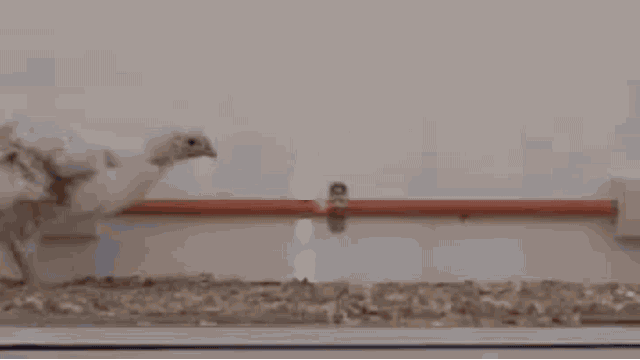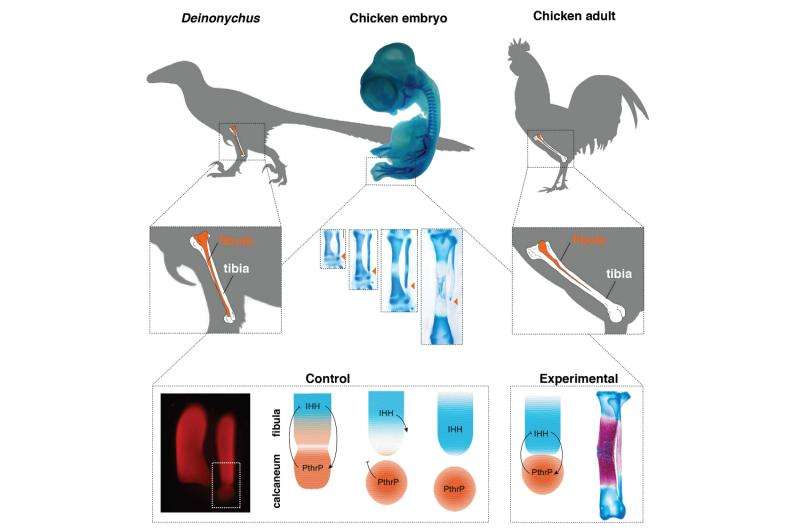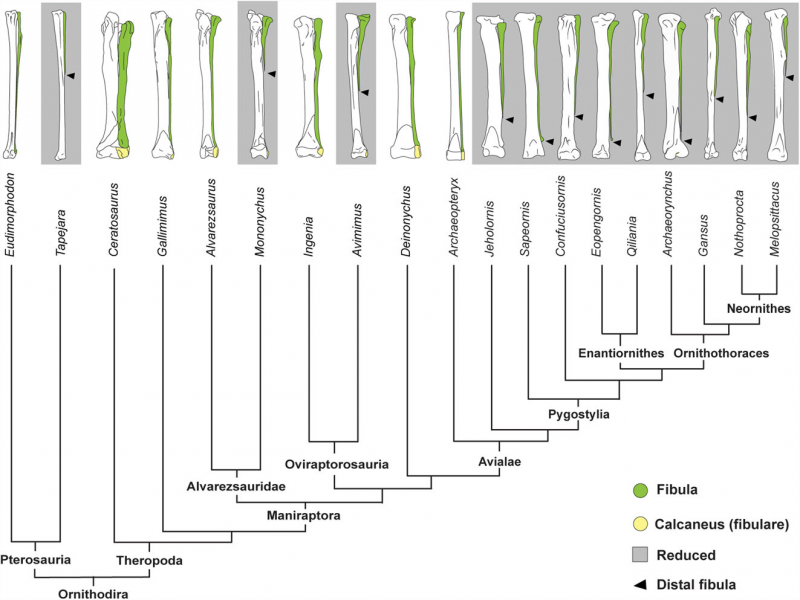Birds of a fibula

Over the last 20 years, there has grown insurmountable evidence that birds are the direct modern descendants of dinosaurs. Eagles are dinosaurs. Pigeons are dinosaurs, annoyingly. Even penguins are weird, swimming dinosaurs.
The data supporting this comes from a whole range of scientific domains, from the discovery of thousands of feathered dinosaurs in the fossil record to chemical and biological analysis of these fossils at a molecular level. As science progresses in terms of technical capability, what we can glean from the fossil record increases too, and we learn more about the link between dinosaurs and birds.
A hugely advancing research field at the moment is in embryonics and genetics. What does this have to do with dinosaurs, you might ask (don't even think about mentioning Jurassic Park..) Well, it's a good point. We don't have any dinosaur DNA, and we have very few fossilised embryos. But wait! If modern birds are dinosaurs, then that means we actually have a lot of dinosaur DNA and their embryos! This means we can start asking a whole range of new questions about the evolution and origins of birds from dinosaurs.
Recently, an international team of researchers took on the task at looking at developmental links between dinosaurs and modern birds. There is an old and quite controversial saying that 'ontogeny recapitulates phylogeny', which means that the growth or development of an individual can be a reflection of the evolution that has occurred along its lineage. Wouldn't it be cool if we could see that in birds and their dinosaur ancestors?

By looking at the development of the fibula (one of the lower leg bones) of chicken embryos, the team discovered that the far end of the fibula expresses a gene known as Indian Hedgehog (great name!) during development. This gene plays an important role in the replacement of cartilage with bone, a process known as ossification.
The Indian Hedgehog gene works as part of a feedback system with another gene, not so nicely named as Parathyroid hormone-related protein (PTHrP), which acts to delay bone growth and also inhibits the further production of Indian Hedgehog. What this means is that if PTHrP is activated within cartilage, it leads to decreased growth of the bone where it is activated.
This feedback system seems to be related to a reduction in the size of the fibula, from an earlier embryonic stage in which both the fibula and tibia start out at similar lengths to each other. This is really neat, because if you look at fully grown birds, they have a much smaller fibula, shaped like a splint, compared to the tibia (the other lower leg bone).
Almost all birds from the Mesozoic era also have a fibula that is much shorter than the tibia, and does not even touch the ankle bones any more. In some early birds, including the now extinct Enantiornithes, the fibula was still almost as long as the tibia. The story the fossil record tells us is one of the formation of an early splinter-shaped fibula, followed by the independent and convergent acquisition of the reduction of this bone in several distantly related early bird groups, including the one that led to modern birds.

This means that dinosaurs and early birds shared the same or similar pattern of fibula development, reflected in their evolutionary relationships and through time.
The reason why this happens though remains a bit of a mystery. Modern birds of different sizes and ecologies all show evidence of this fibula reduction. This suggests that it is what is called a 'non-adaptive' process, as it is highly unlikely that such a feature would play a part in such different roles.
We're only just beginning to unlock the molecular links between dinosaurs and birds, and this represents a really neat glimpse into the future of this research field.
More information: João Francisco Botelho et al. Molecular development of fibular reduction in birds and its evolution from dinosaurs, Evolution (2016). DOI: 10.1111/evo.12882
Journal information: Evolution
Provided by Public Library of Science
This story is republished courtesy of PLOS Blogs: blogs.plos.org.




















